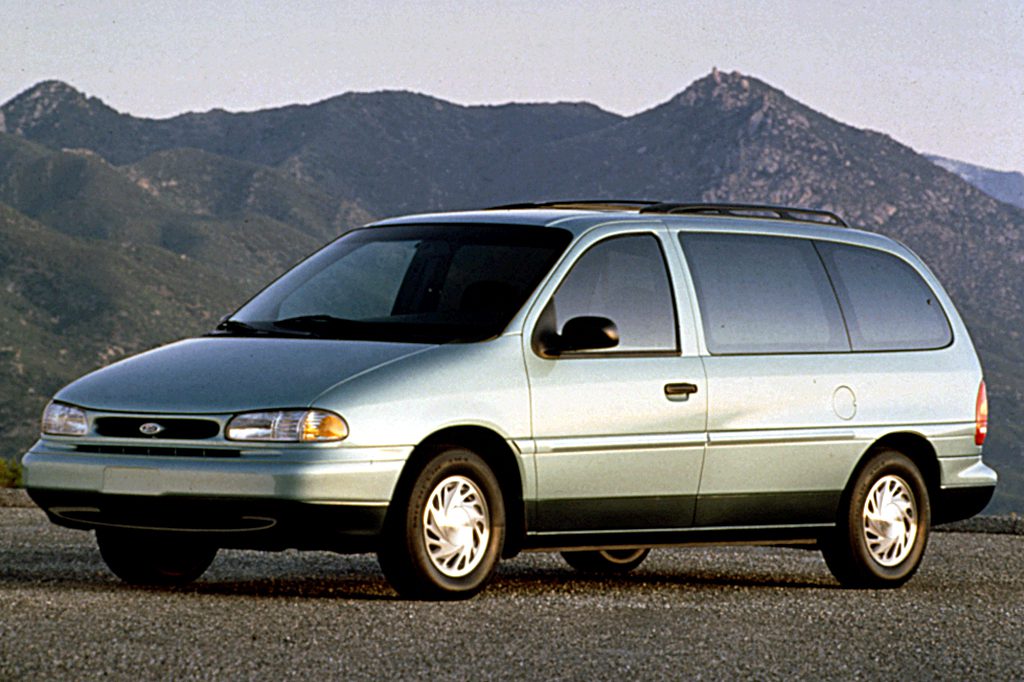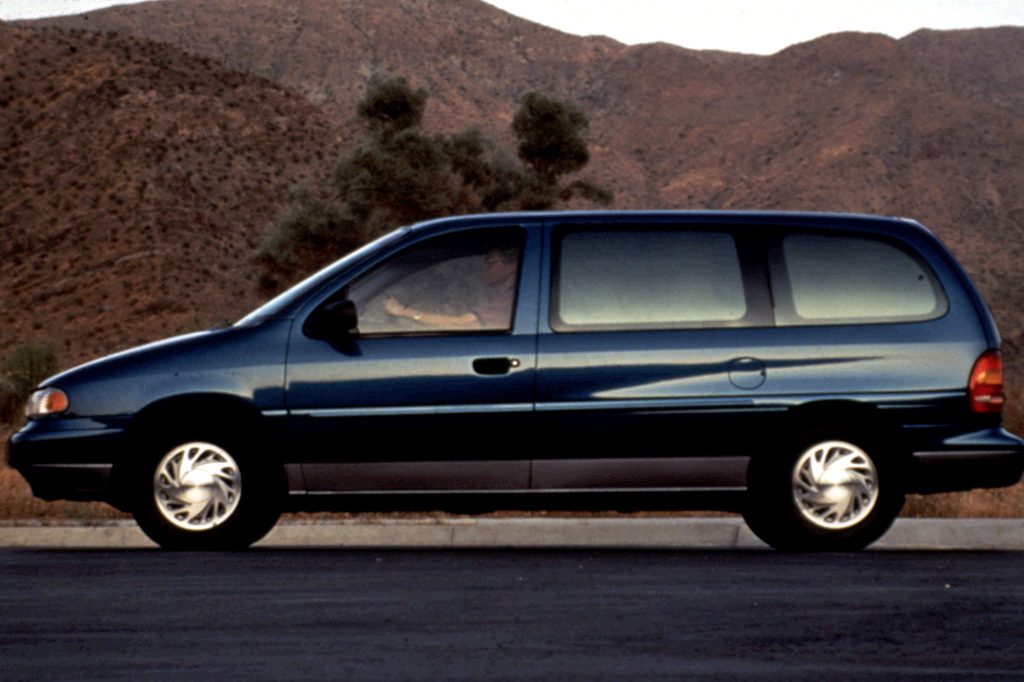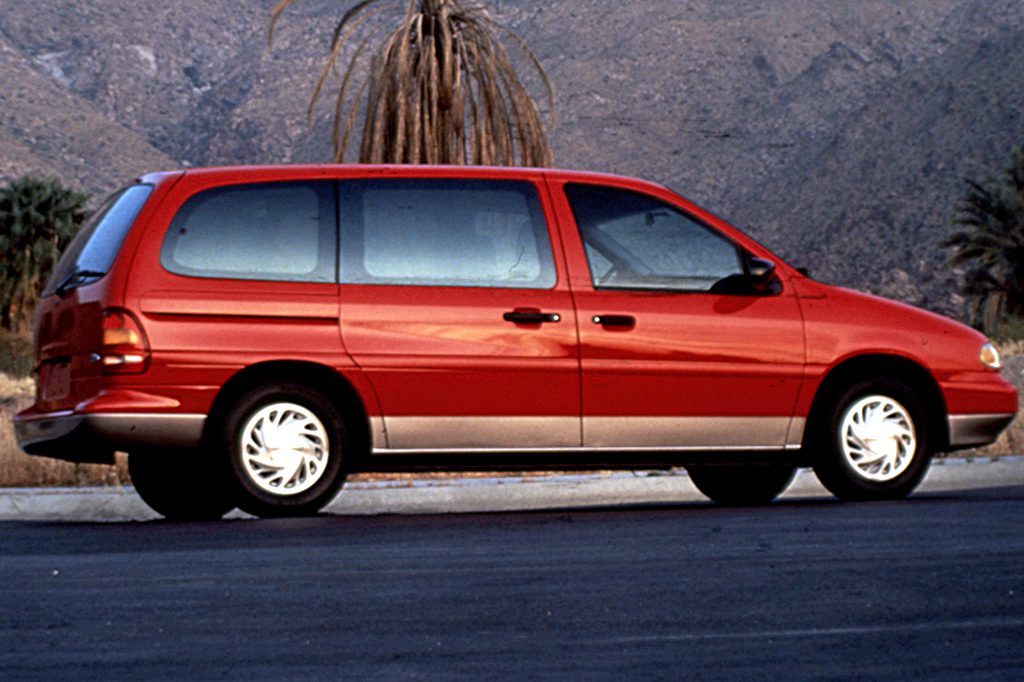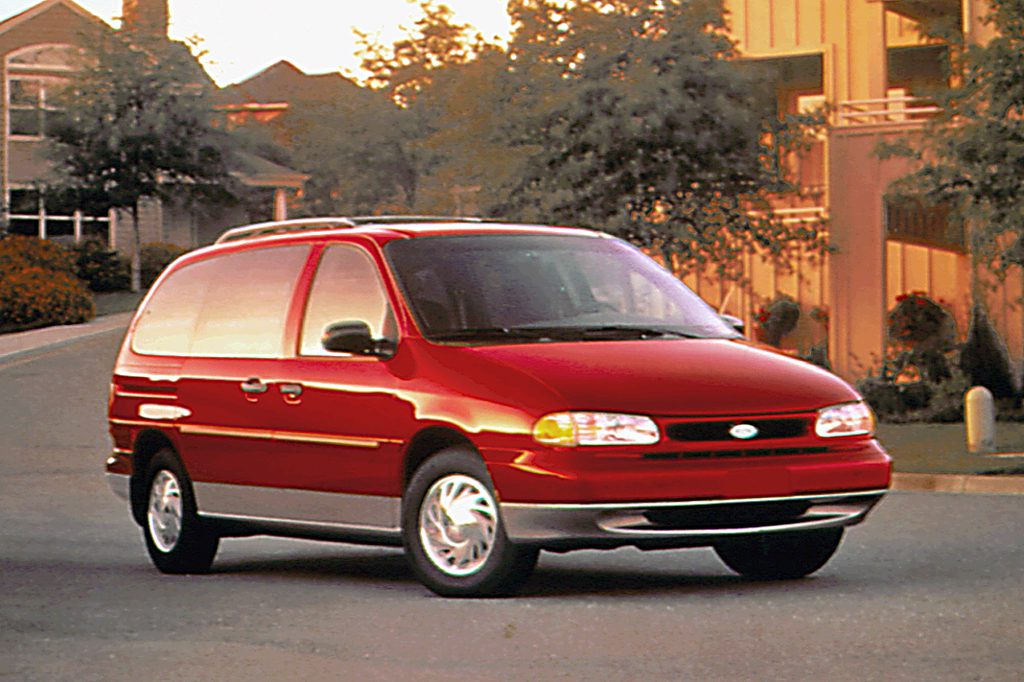| Minivan; Built in Canada |
|
|
| Good condition price range: $1,100 – $2,800* |

1995 Ford Windstar

1995 Ford Windstar

1995 Ford Windstar

1996 Ford Windstar interior

1997 Ford Windstar
| Pros: |
|
| Cons: |
|
Windstars haven’t proven to be quite as successful as Ford had hoped, but Ford’s front-drive model equals or beats Chrysler’s minivans in key areas of performance and accommodations. Therefore, Windstar is well worth a try.
Overview
Ford’s first front-drive minivan went on sale as an early 1995 model. Windstars came in one size, with a sliding right rear door and a one-piece liftgate. Dual airbags, antilock brakes, and seating for seven were standard. Windstar’s 120.7-inch wheelbase was the longest of any minivan. At 201 inches overall, it measured 8.2 inches longer than a Grand Caravan, and about 11 inches longer than a Mercury Villager. Cargo volume is 144 cubic feet. GL and upscale LX models held a 155-horsepower 3.8-liter V6 engine. All models used a 4-speed electronic automatic transmission. Standard towing capacity was 2000 pounds, but a 3500-pound towing package became optional later.
Yearly Updates
| 1996 Windstar The Windstar’s 3.8-liter engine gained 45 horsepower in its second season. A smaller (3.0-liter) V6 became standard in the GL, with the 3.8-liter an option. All-disc brakes now were available, with a trailer towing package or new all-speed traction control. Seatbelts got new automatic locking retractors. In midyear, a tip-slide feature for the driver’s seat became available, to allow passengers to enter the middle row of seats from the driver’s side. |
| 1997 Windstar A lower-priced base model (called Standard) joined the Windstar lineup, with limited option availability. |
| 1998 Windstar Changes for ’98 included a wider driver’s door that allowed easier access to the middle and rear seat and new front styling. A line-topping Limited model was also added. Windstar was redesigned for ’99. |
